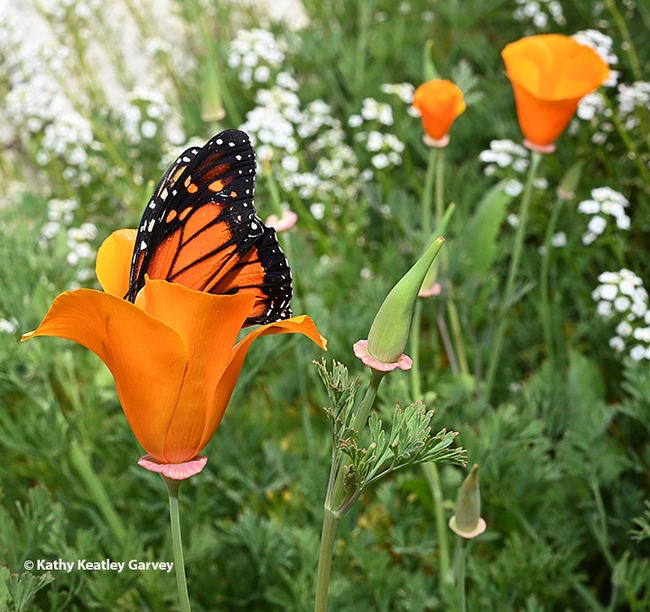- Author: Kathy Keatley Garvey
Monarchs and California golden poppies...Color them orange...Color them bold...Color them beautiful...
And color them natives...
The California golden poppy, Eschscholzia californica, California's state flower, is popping up all over, while monarchs, Danaus plexippus, are winging their way inland from their overwintering sites along the California coast.
The overwintering population in California dropped this year by 30 percent as compared to last year, according to the Xerces Society for Invertebrate Conservation. The stormy weather didn't help.
"The 27th annual Thanksgiving count ran from November 11 through December 3, 2023, totaling 233,394 butterflies across 256 overwintering sites in the western United States," Xerces reports on its website. "This tally is slightly lower than last year's (330,000), yet similar to the 2021 count. The overwintering population of western monarchs remains at approximately 5% of its size in the 1980s."
Overall, habitat loss and increased use of pesticides and herbicides continue to be key factors in the decline of the monarch population.
Interestingly enough, both monarchs and California golden poppies are toxic. "All parts of the (California golden poppy) plant have toxic properties if ingested," according to the State of California Capitol Museum website. And, as we all know, monarchs are toxic. As caterpillars, monarchs sequester or store toxins from milkweed, and those toxins help protect them from predators. The coloring is also a deterrent.
Two natives, toxic, but beautiful...



